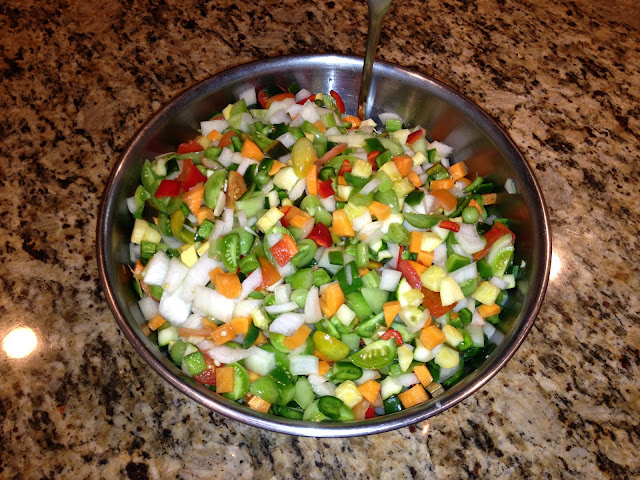It's been a long time since I had the time to really get serious with the smoker, but I found I had some time on my hands recently and took the opportunity to smoke a bunch of different meats to put up for the winter.
Below, top, is a fairly traditional bacon curing. It does have a lot of extra pepper and garlic in it to make it a little more savory, but it is still sweet bacon that my family likes best. Below left is pork belly Lardo. I haven't tried this before, but thought is sounded good. I have made regular Lardo before. The only real difference is that you use belly instead of fat back to make the lardo, so it is meaty. Bottom right is pancetta.

The bacon cured for just a week and then I smoked it with Mesquite for an hour with the other meats. The Lardo and Pancetta are still curing, for a total of two weeks. Neither will be smoked. The Panchetta will be air dried for a week and then packaged; the lardo will be air dried for the better part of a month before it is packaged. The Panchetta will also need to be cooked before it can be eaten; the Lardo will be sliced very very thin and eaten raw on various things.
This is the bacon again. It takes on a really nice mahogany color because of the brown sugar and molasas.
Lardo with all the fresh herbs from the garden showing up-- parsley, thyme and garlic mainly.
Panchetta with some of the same herbs from the garden.
This is everything packed into the smoker. A full briskett on top, sliced into halves. In the middle are two pork bone-in shoulders. On the bottom is the bacon from the pics above. To the right are three racks of pork ribs.
I put a dry rub on the ribs and smoked them for four hours.
Dry rub on the briskett and smoked them for ten hours.
Dry rub on the pork shoulders and smoked them for ten hours.
The bacon, just out of the cure and washed and dried very well, before smoking an hour.
Nothing better than reading a book while you tend a smoker. Smells good. Very relaxing.
The ribs after four hours of smoke.

The briskett after ten hours of smoke. After six hours I wrapped them in foil. You can see some containers in back with liquid in them. These are the juices from the beef and pork that I saved from the foil after four hours of additional smoke time. That broth is liquid gold. It is very strong and can be used for all kinds of kitchen magic later. It is really very close to a demi-glace.
These are the pork shoulders. Again, I wrapped them after six hours of smoke in foil, then smoked them for an additional four hours. Fall apart tender and good. Had pulled pork sandwitches the next day and they were very good.
Now I have a freezer full of all this goodness. I like it when I have spare time.































